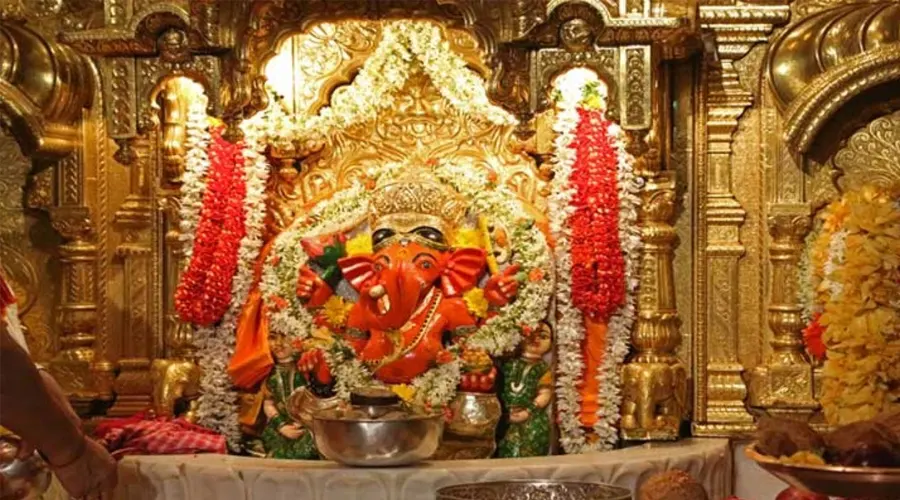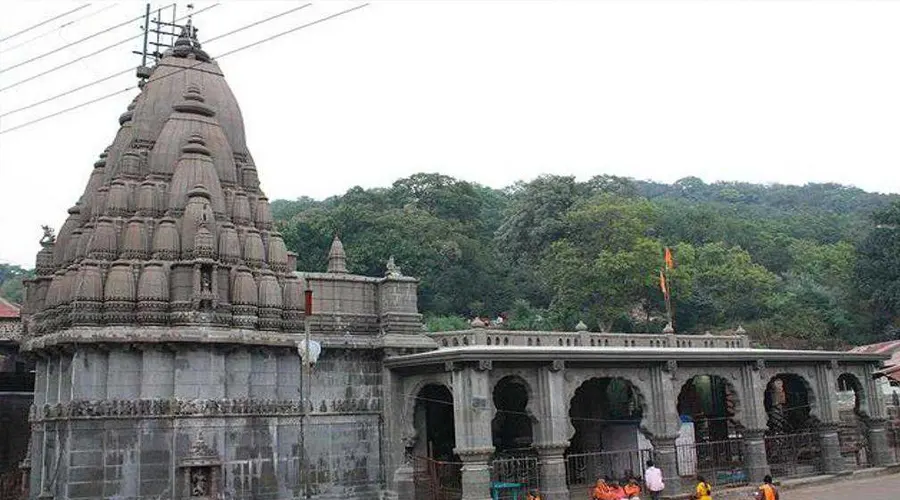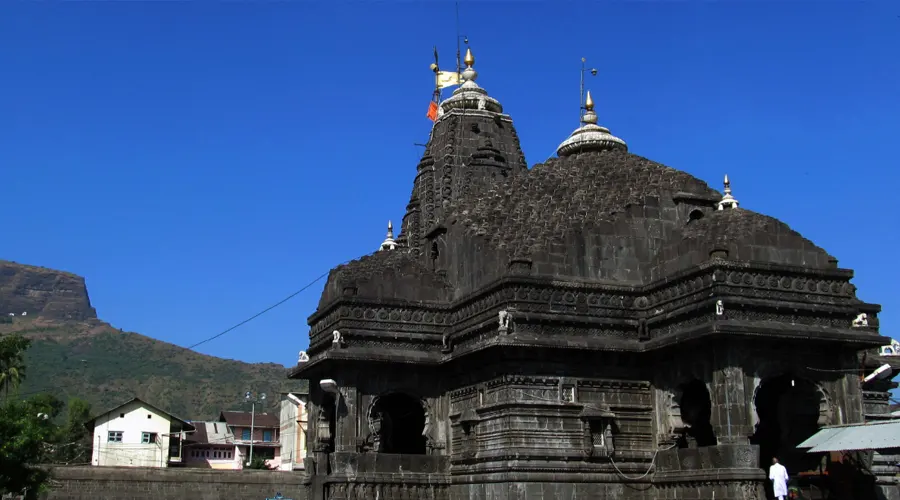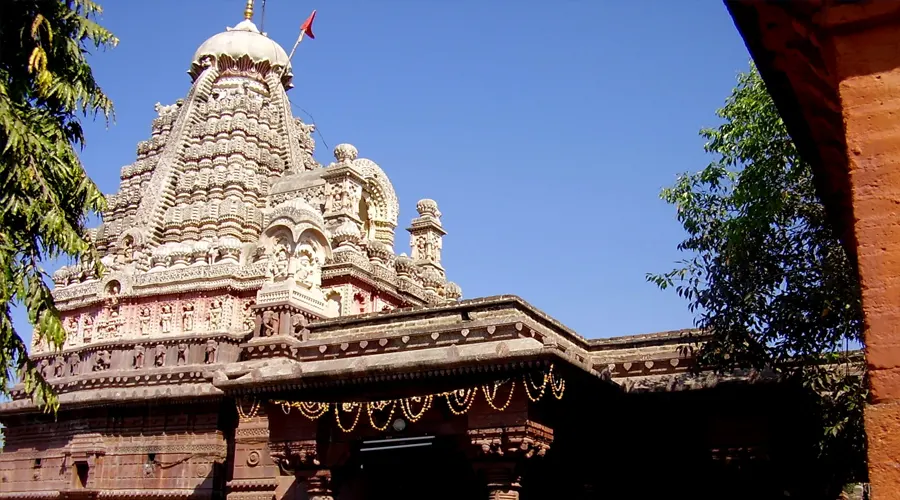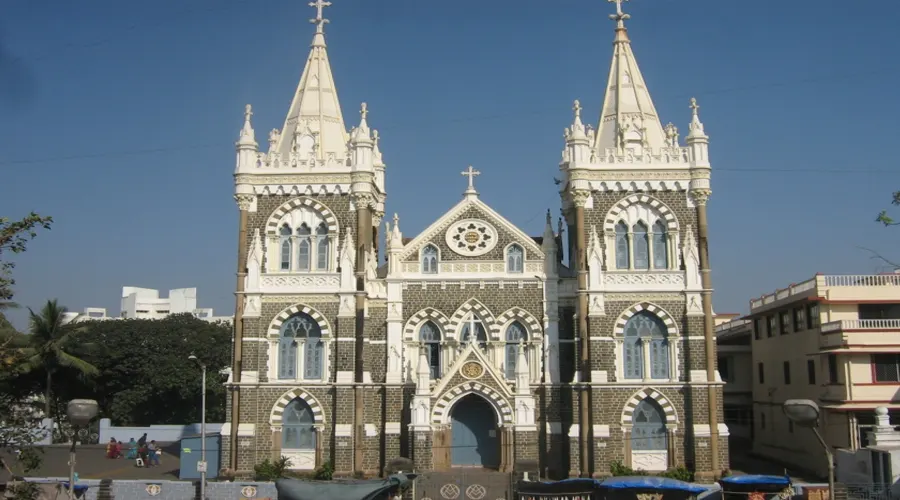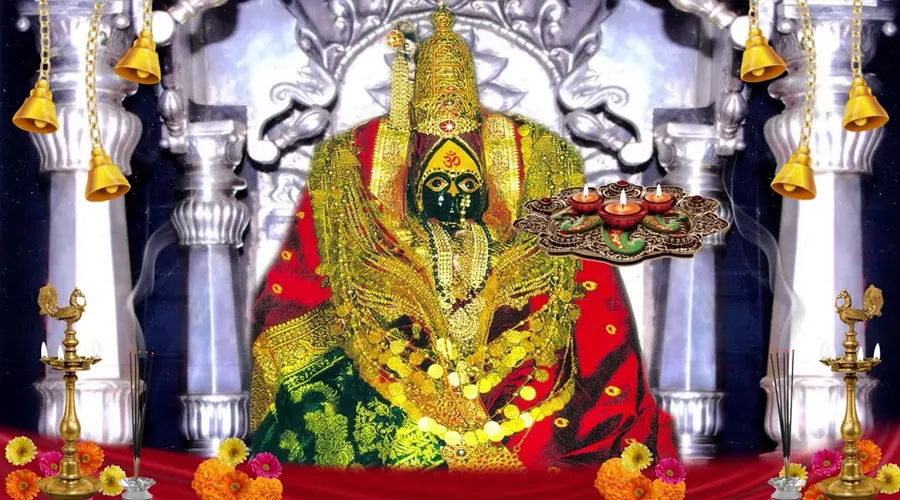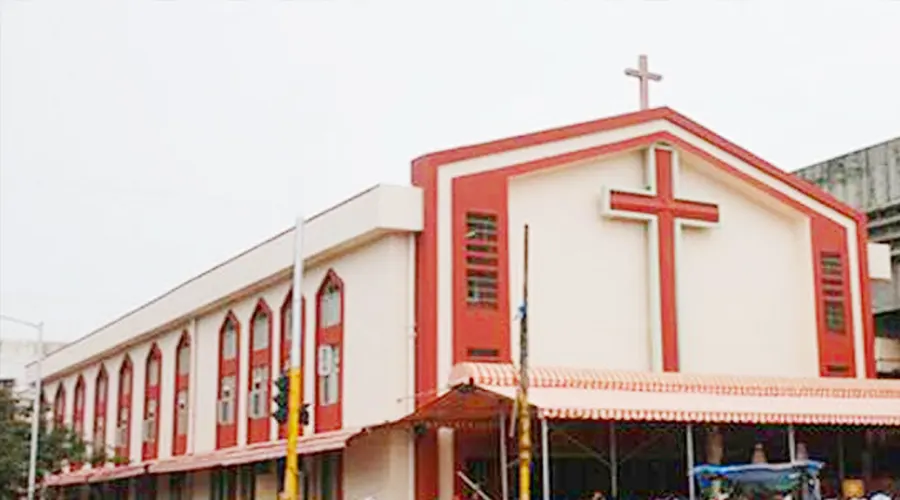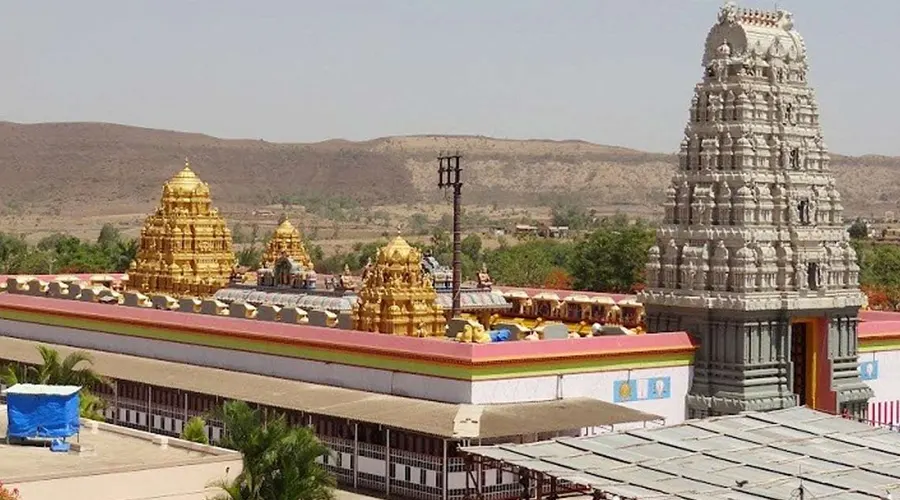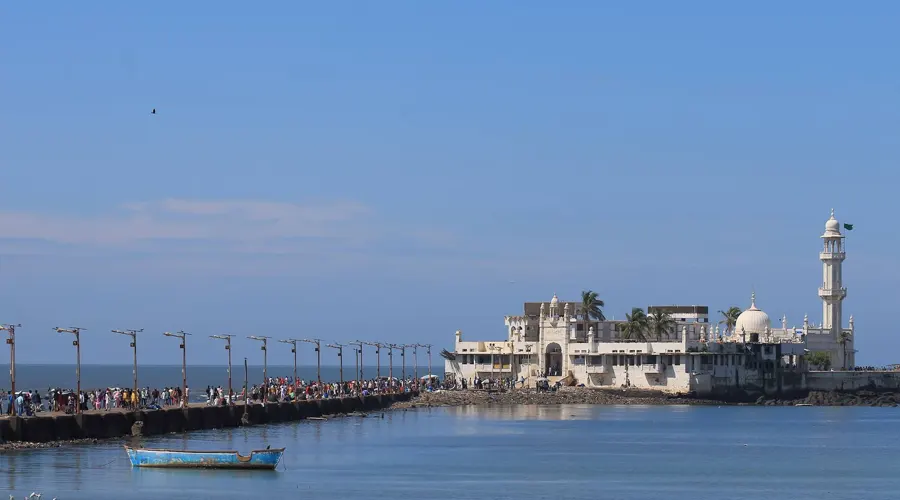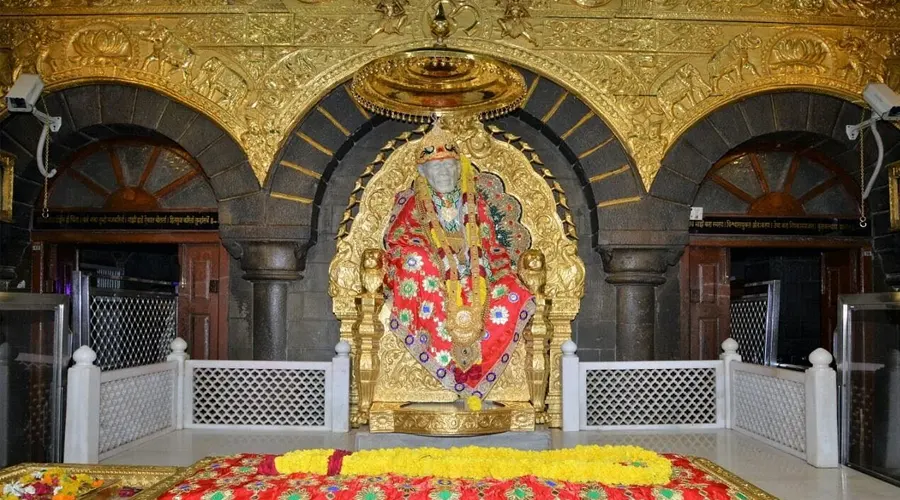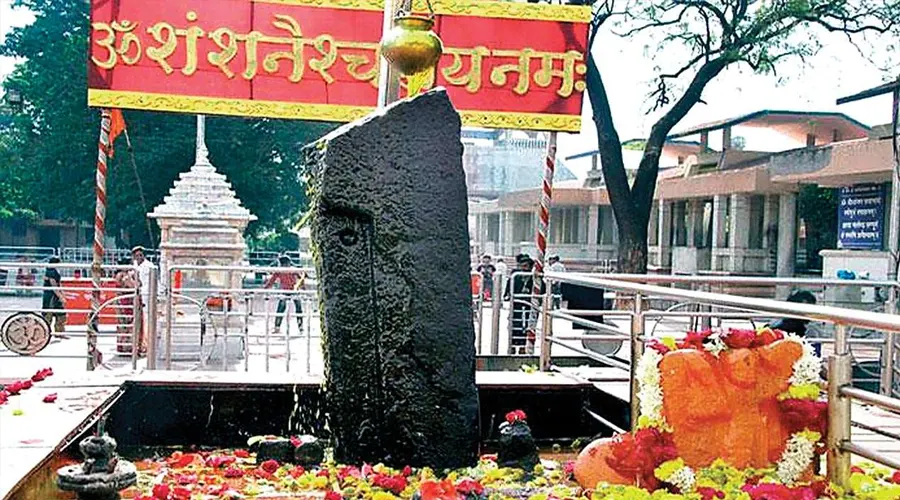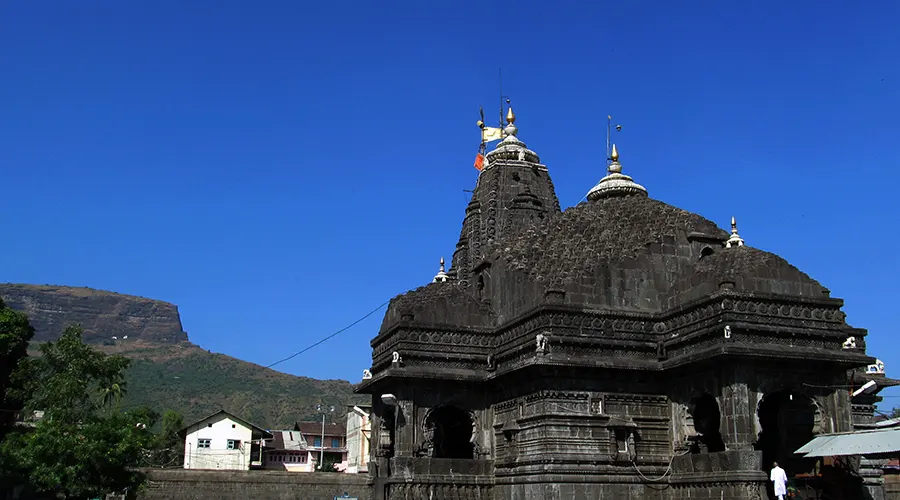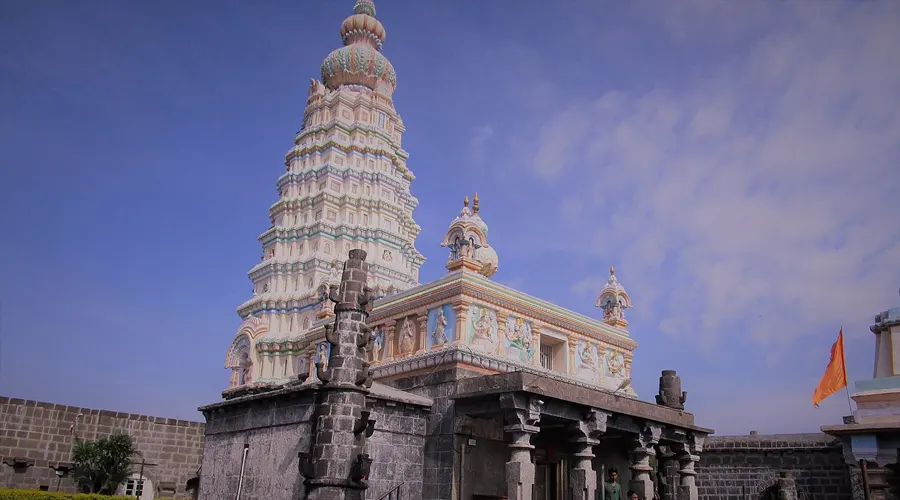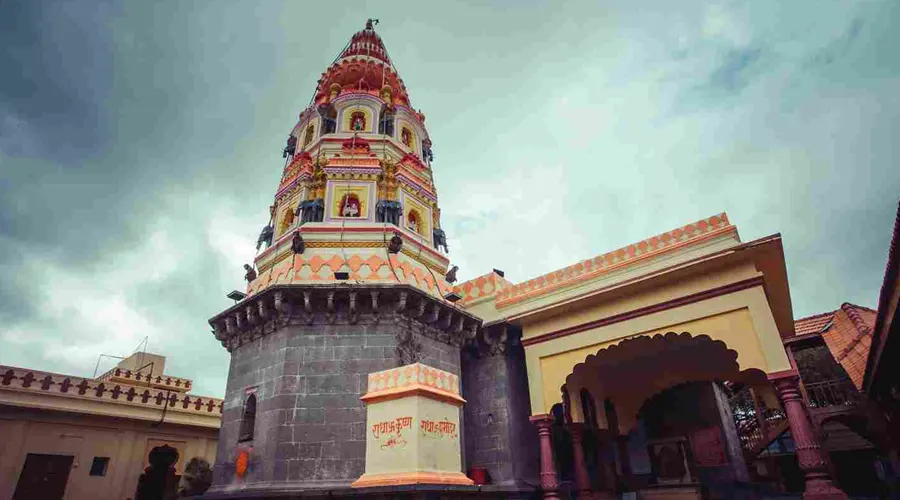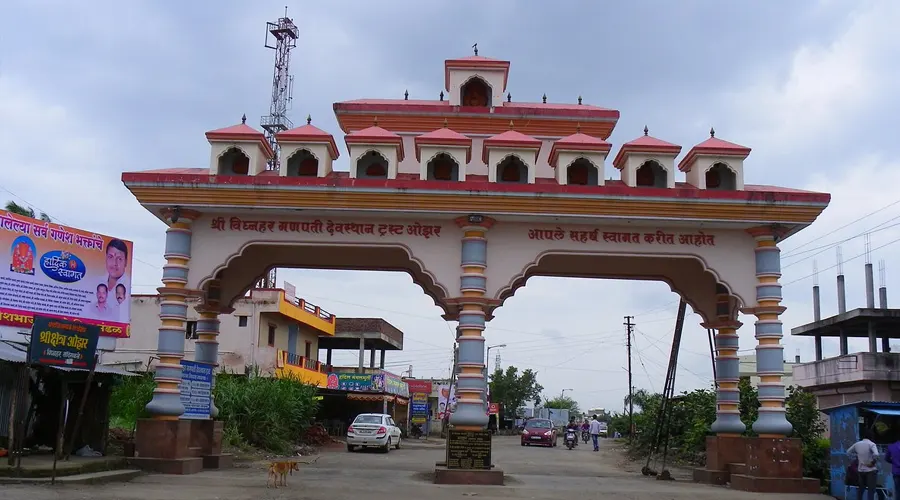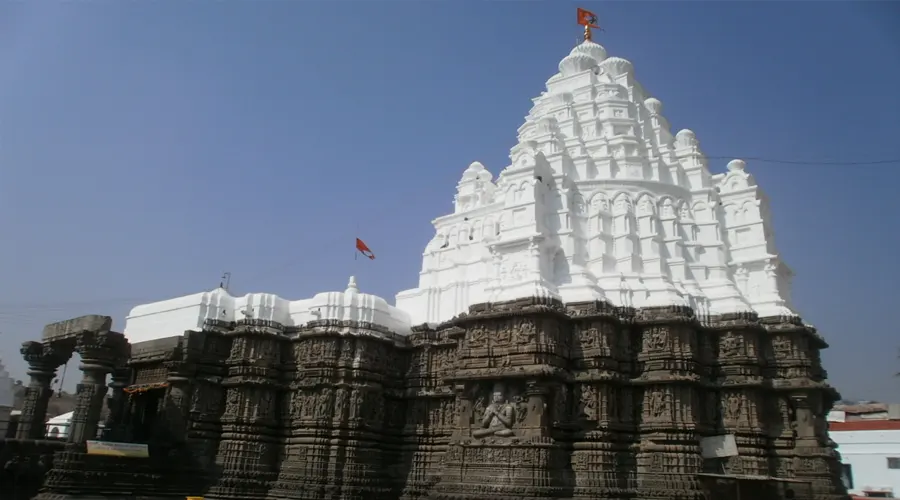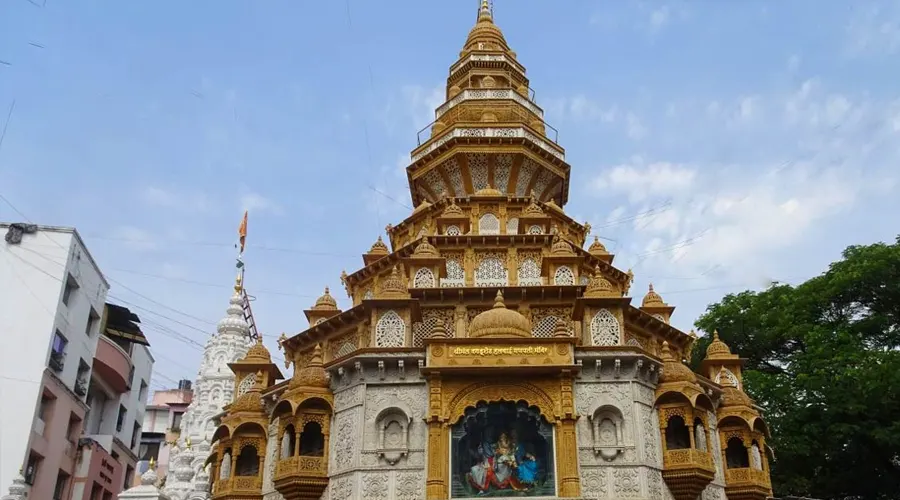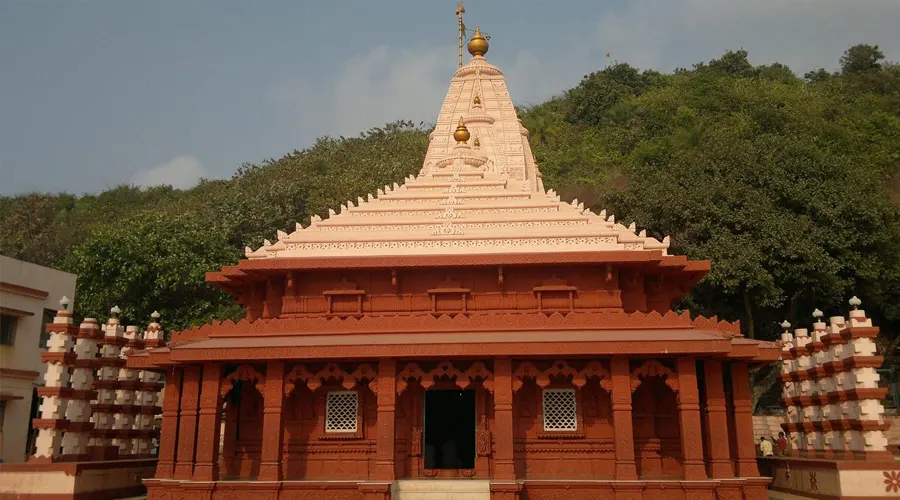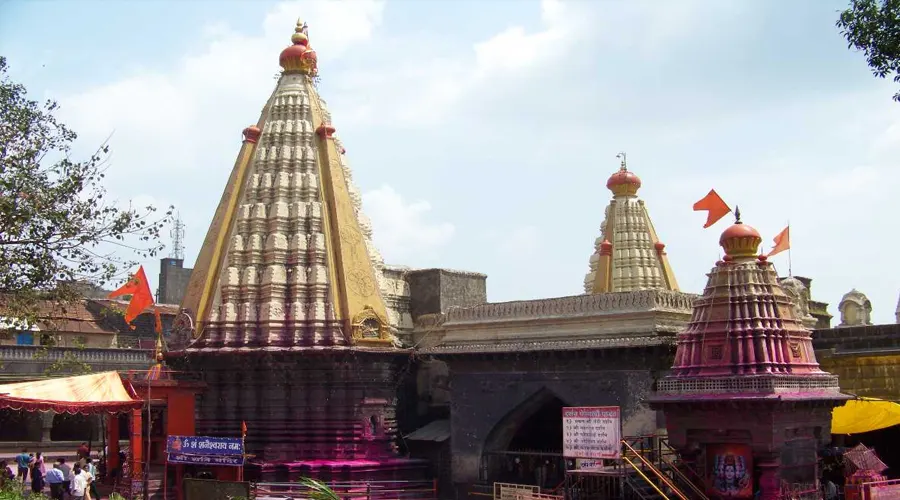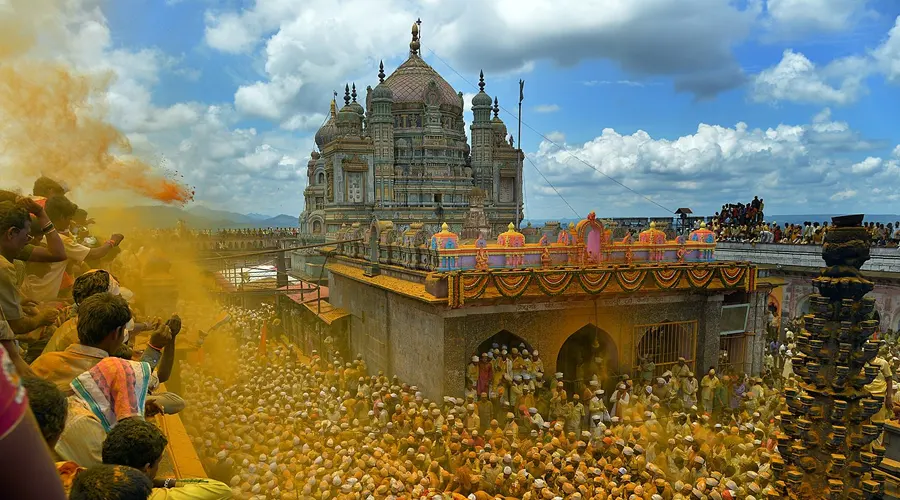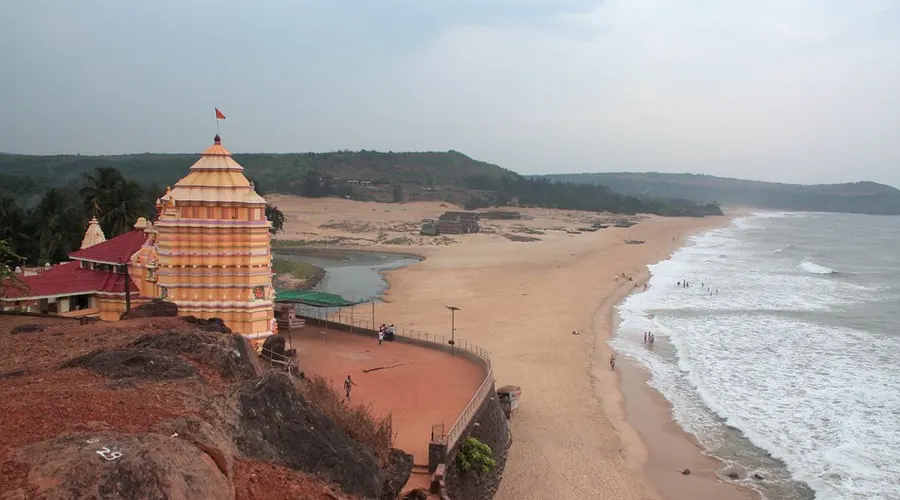Shri Siddhi Vinayak Ganpati Mandir
Reckoned the most famous, and wealthiest temple in India, Shree Siddhivinayak Ganapati Mandir at Prabhadevi (Mumbai) was originally built by Laxman Vithu and Deubai Patil on 19 November 1801. The temple is famous for its unusual image of Lord Ganesha , which resides in its innermost wooden sanctum. The temple’s idol of Shree Siddhivinayak is carved out of a black stone with a trunk on the right. On the forehead of the deity, there is an eye, which looks exactly like the third eye of Lord Shiva. Flanking the deity on both sides are Riddhi & Siddhi, goddesses signifying sanctity, fulfillment, prosperity, and riches. And it is because of these deities, the temple is called the Siddhivinayak Ganapati Temple.
Along with its mythological significance, the temple is equally unique for its architecture like its wooden doors to the sanctum, which are carved with the images of the Ashtavinayak (the eight manifestations of Ganesha in Maharashtra). The innermost sanctum, the resting place of the god, is plated with gold. Additionally, the temple complex is spread over five floors. The fourth floor has a library and reading room. While on the fifth floor, there is a dining area and kitchen. Also, there is a dedicated enclosure inside the temple for Lord Hanuman, where one can see a statue that was unearthed during a road construction project in 1952. Every day, an 'aarti' of the goddess is performed twice a day first time in the morning just before the sunrise and the second time in the evening immediately after the sunset.
Siddhivinayak temple looks at its best during the festival celebrations. During the festivities like Maghi and Bhadrapd Ganeshotsav, Mahashivratri pooja, Angarki Chaturthi pooja, and Shri. Ramnavami pooja, Magh Mahotsav, Ganeshotsav, Gudipadwa Celebrations, Navratrotsav, and Kumbhabhishek, special cultural and social activities take place in the temple, which attracts the attention of people from all corners of India.
History
Siddhivinayak Temple traces its roots to the year 1801 when it was originally built by a man named Laxman Vithu. The construction of the shrine was funded by a rich, childless woman named Deubai Patil with the belief that Lord Ganesha will grant the wishes of other women who haven’t had a child yet.
The original temple was a small brick structure that measured 3.6 meters * 3.6-meter square feet. A dome-shaped shikhara adorned the structure and within it was housed a black stone idol of Ganapati, which is kept intact even today. According to local legends, Ramakrishna Jambhekar Maharaj (who was an ardent follower of Akkalkot Swami Samarth, a Hindu saint) buried two idols in front of the Siddhivinayak idol as per the instructions of his guru. As was foretold by Swami Samarth, 21 years later, a Mandar tree grew at the spot where these two idols were buried. The tree had an image of Svayambhu Ganesha on its branches.
When a Hanuman idol was discovered during a road extension work in 1952, a small shrine dedicated to Him was also added to the temple compound. Over the years, the fame and local lores associated with this temple spread far and wide. The shrine underwent a massive renovation in 1990 at an expense of 3 crore Indian rupees turning a 200-year-old, modest shrine into one of the most eye-catching and grand temples in Mumbai.
Architecture
Siddhivinayak Temple is a 6-storey building with a dome at its apex. This prominent dome is plated with gold and adds to the attraction of the temple. The edifice is mainly built of marble and pink granite while the multiple domes in the premise are made of either gold or a combination of five metals.
There are three entrances to the inner shrine on the ground level. It is on this floor that visitors throng for pooja and darshan. The idol of Ganesha sits in the inner sanctum on an opulent throne of gold. He is flanked on either side by the idols of Hindu goddesses Riddhi and Siddhi.
The second floor is home to the kitchen where food is prepared to be offered to the idol. There are also some administrative offices on this floor. The third floor is the main office and the computer room. The fourth floor is a library and study hall with a collection of more than 8000 books on various genres. Access to this hall and all the books is free for all.
On the fifth floor is another kitchen – a larger one for cooking food during the festivals and special fire offerings. The sixth (and also the top) floor of the temple is the group of 47 gold-plated crowns which make up the roof.

